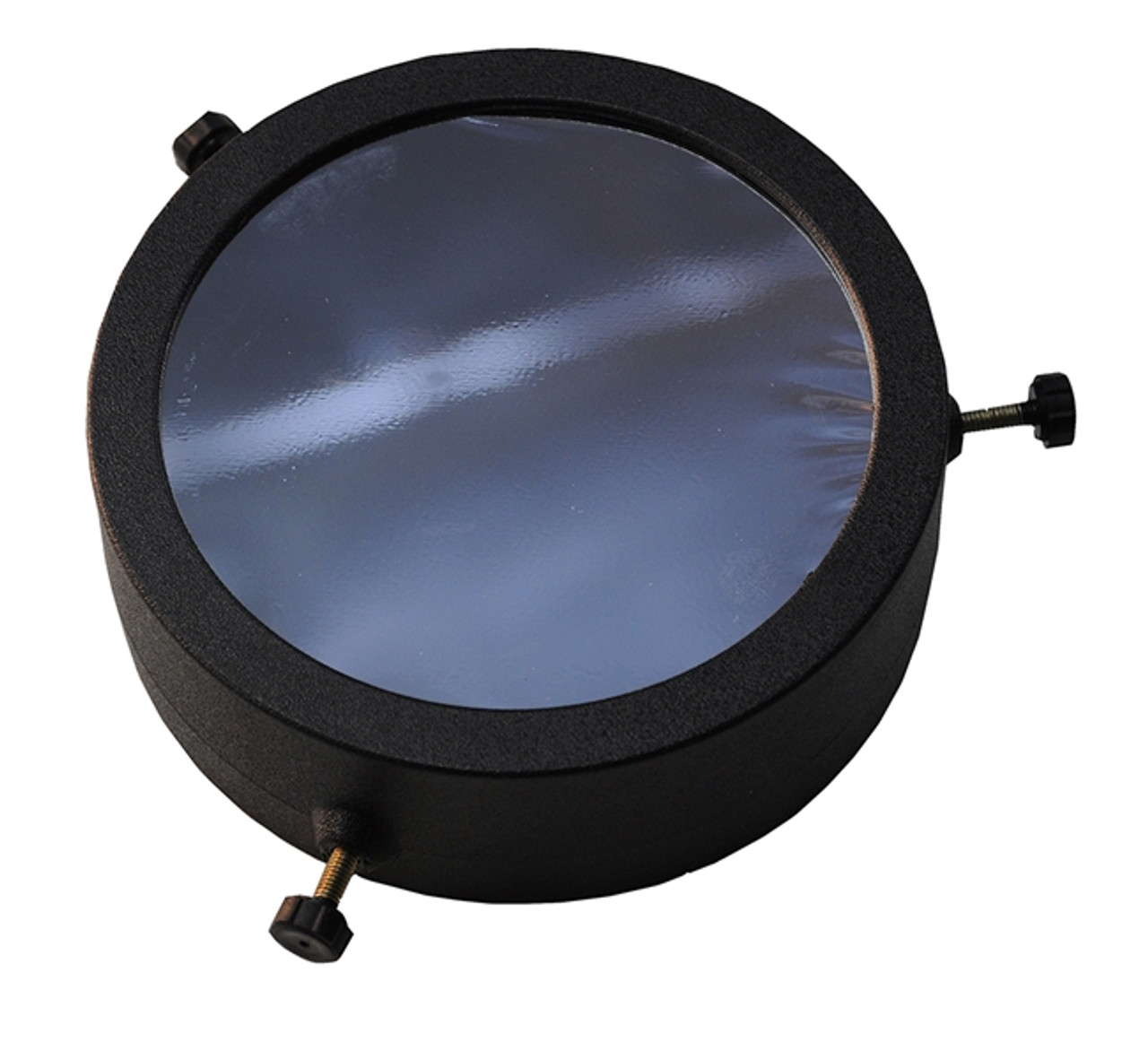Product Description
The StarGuy White Light Adjustable Solar Filters allows you to photograph sunspots, eclipses and planetary transits with your camera. The design blocks 99.999% of the intense light from the sun and allows so you can
take photographs of solar events or view them safely through your telescope for a short period of time. The solar filter is placed in the direct path to the sun. It is the first surface that the sun hits before passing through the telescope or camera.
StarGuy's slip-on solar filters are designed to give you the best imaging experience, with the ease of simply attaching the filter onto the front of your telescope or camera lens. When you image through the StarGuy Solar Filter, the sun appears in neutral white delivering an exceptional observing experience with more detail than from other filters. Some films and glass filters produce blurry reddish or bluish solar images, which in turn, cuts part of the spectrum. With the StarGuy Solar filter photographers will see detail and sharpness across the field of view
StarGuy Solar Filters are manufactured using Baader Film. The film is extremely tough and will not break or tear easily. The Baader film has a “wrinkled” surface. This does not affect the quality of the images you see or photograph. The “wrinkles” may actually improve the contrast of your imagesThere are a number of filters that stretch and smooth out the material, but this will impact the quality of your images. When stretched tight, the filter
works like a glass un-coated filter, delivering inferior image quality and safety issues.
The StarGuy Filter ring is a lightweight aluminum alloy coated with a non-reflective finish. This model of the adjustable filter fits the front of a telescope with an outside diameter of 86-117mm. Please note, for your safety and that of your equipment, never look directly at the sun or point your camera at the sun without the correct solar filter.
FAQs
- You should not use a photographic filter for visual observing of the sun.
- You can use a visual filter as a photographic filter, but your images may need longer exposures and may not be as sharp.
- Be sure to examine the filter before each use to assure there are no holes or tears.
- Cover your finder scope. Do not use this if you have no filter on the finder scope. Covering it ensures that no one looks through it accidentally.
- Wait for at least 15 minutes after affixing you filter to ensure that the filter and your equipment equalize temperature.
- If using an open tube telescope, cover the open section to ensure no light enters the sides which can cause damage to your instrument and the filter.









